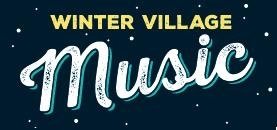Perry Cleaveland
Mandolin
Perry Cleaveland is a SAMMY Award winning mandolinist who also adds lead and harmony vocals, fiddle, lead guitar and clawhammer banjo. Born in Louisville, Kentucky Perry emigrated to Syracuse, N.Y. and grew up in a household that hosted many bluegrass luminaries during his formative years. In his High School years, and continuing later, he began playing in a number of New York State Bluegrass bands including: Hard Times, Pleasant Valley, Bristol Mountain Bluegrass, Rosewood, John Rossbach & Chestnut Grove, The McCarthy Paisley Band, and Lost Time. He has performed for festivals, colleges, clubs, private parties, corporate events, arts centers, schools, town concerts, PBS/NPR affiliates: WCNY, & WXXI, and New York State Council on the Arts-sponsored events, including Arts in Education series’ under the auspices of Young Audiences of Rochester.
His innovative mandolin playing keeps him in demand as a recording session player throughout New York State having played on projects by many regional Bluegrass, Old Timey and Folk artists such as: Joe Davoli, Maria Gillard, John Cadley, Ted Lambert, John Stevens, Joe Lamay & Sherri Reese, Andrew and Noah Van Norstrand, Jim Clare, Northwater, The Atkinson Family, Lisa Bigwood, Rebecca Colleen & the Chore Lads, Meyer & McGuire, Brian Coughlin, The Cool Club, Leslie Lee & Steve Gretz, Dan Dugan, The Crooked North and those bands as previously listed. Perry recently shared a CD release with Rochester NY's fabulous Roots acoustic band, "The Crooked North" and is concurrently working on a project of his own original melodies and musings.
WORKSHOP DESCRIPTIONS
Up the Neck & Chord Inversions: Techniques discussed to initiate and launch into second/third position playing on solos via anchoring, blocked positions, utilizations of open scale tones, etc. Dependent upon style of musical accompaniment, discussion and application of triad note chord placement to best complement song or tune/
Adding Color to Chords & Solos: Add interest to your accompaniment and solo by considering the melody line, tension and resolution via the employment of notes and chords in and outside of the diatonic scale.

